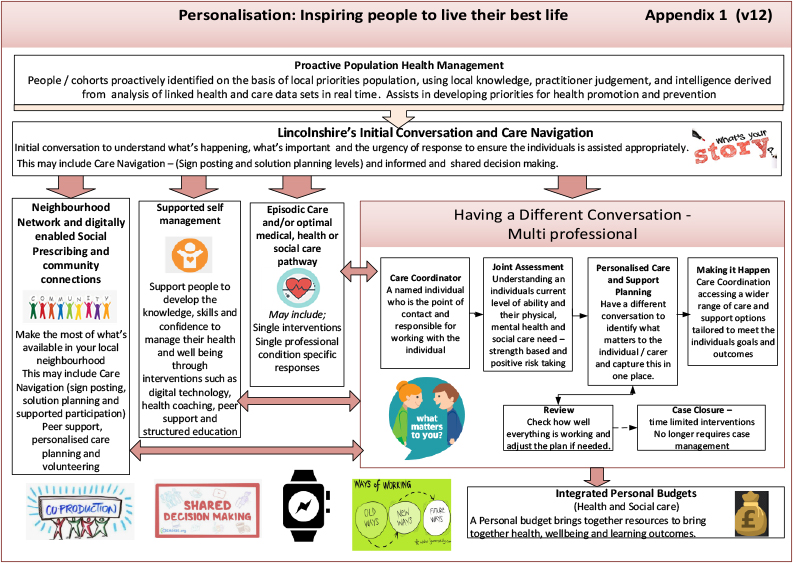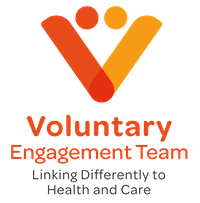Personalisation Operating Model
In 2019 The Universal Personalised Care Model was published as part of the NHS Long Term plan, it was co-produced with people with lived experience and has taken a significant amount of learning and evidence from other parts of the care system in particular social care, learning disability, children services and our VCSE.
This should be the framework in which we operate in.

We need to identify our local populations – through business intelligence, practitioner judgement and local knowledge as this will enable informed and targeted interventions. Our population will benefit from an initial conversation that can happen anywhere in our health and care system. Some people may just require a one off intervention but have engaging and meaningful conversations to ensure that they are informed to be able to seek support and help early enough to prevent a crisis or a reactive response. Others may recognise the need to connect back with their local community or join it for the first time with the support of a social prescribing link worker. There will also be some people who may need some support in developing knowledge, skills and confidence to manage their own health and wellbeing. Approximately 30% of people and carers may require a more detailed conversation, around personalised care and support planning.
The focus remains the same on what matters and what's important, and looks at all the resources and connections that are around them. This is the point when multi professionals become involved or when a small percentage of individuals would benefit from a direct payment or personal health budget (PHB).
In order to drive this change we must acknowledge;
- It will take time. This is a generational change
- We must do this with people through true co-production and co design
- We must invest in supporting our workforce, the people we work with and the public to make the shift in relationships













